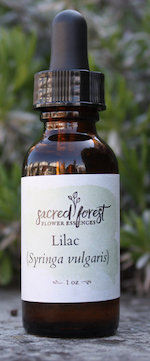Good Plants to Know, Part 1
Contributed by Harry
When out and about, whether in the ‘wild’ or wandering through ‘civilization’, there are several plants useful to be able to recognize.
The first is Plantain. This common weed came with the European colonists and is everywhere.
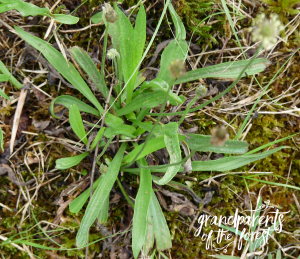
Narrow-Leaf Plantain
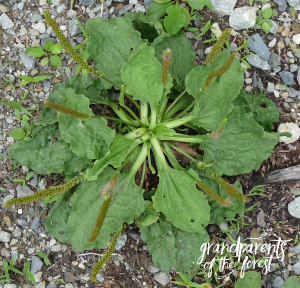
Wide-leaf Plantain
There are two species: Narrow-leaf (Plantago lanceolata) and Wide-leaf (Plantago major). They both work equally well. This is a good plant to be able to recognize when you get stung by an insect.
Pick a couple of leaves, chew them up and apply the chewed pulp to the bite. The saliva is important in activating the healing.
The next plant it would help to know is Jewelweed or Wild Touch-Me-Not. Its second name comes from the explosive way the fruit shatters to spread its seeds.
There are two species of this plant also: Spotted (Impatiens capensis), with orange flowers and Pale (Impatiens pallida) with pale yellow flowers. Both species get their more common name, Jewelweed, from the silvery shimmer a leaf submerged in water displays.

Spotted Jewelweed
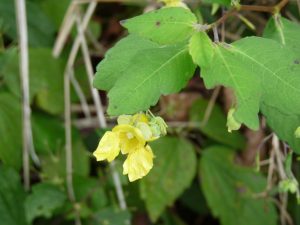
Pale Jewelweed Flower
This succulent plant is often found in moist soil, along streambeds, forest edges and roadsides. It is also often found near Poison Ivy – which is a good thing because Jewelweed is an antidote for Poison Ivy rash!
Just pick some leaves and stems, crush them up and rub the pulp on the exposed skin.
The next plant is useful to know so you can avoid it: Poison Ivy (Toxicodendron radicans, formerly Rhus toxicodendron). It is characterized by three waxy-leathery leaflets and a very ‘hairy’ vine stem. It has white flowers and berries and the leaves turn a beautiful red in autumn.
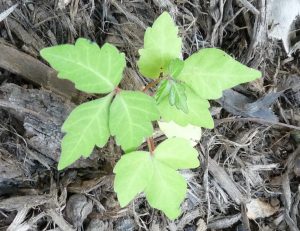
Poison Ivy seedling
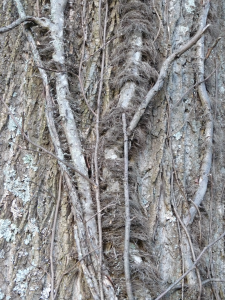
Poison Ivy Stem
The winter-dormant roots and long-dead vines will still have the urushiol toxin, so it is good to know what they look like also. The roots tend to be orangish-yellow with many side rootlets.
If you rub against this plant, wash with cold water and LOTS of soap with scrubbing as soon as possible. If a rash develops, rub the rash with Jewelweed.
Lastly, Yarrow (Achillea millefolium) is a good friend to have around.
Put a poultice of yarrow leaves and flowers on a bruise to help it heal quicker.
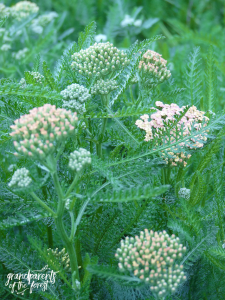
Yarrow
And Yarrow leaves will stop bleeding from wounds like cuts, punctures and scrapes. You can dry the fine feathery leaves and carry them with you in an emergency first-aid kit.
When going out, know your friends. Have fun and be safe.
